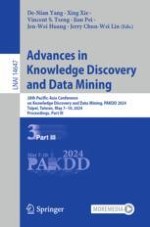2024 | OriginalPaper | Buchkapitel
Unmasking Dementia Detection by Masking Input Gradients: A JSM Approach to Model Interpretability and Precision
verfasst von : Yasmine Mustafa, Tie Luo
Erschienen in: Advances in Knowledge Discovery and Data Mining
Verlag: Springer Nature Singapore
Aktivieren Sie unsere intelligente Suche, um passende Fachinhalte oder Patente zu finden.
Wählen Sie Textabschnitte aus um mit Künstlicher Intelligenz passenden Patente zu finden. powered by
Markieren Sie Textabschnitte, um KI-gestützt weitere passende Inhalte zu finden. powered by
